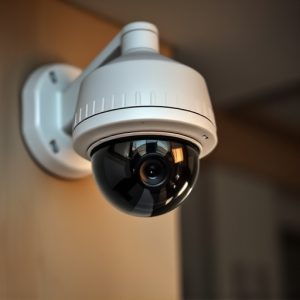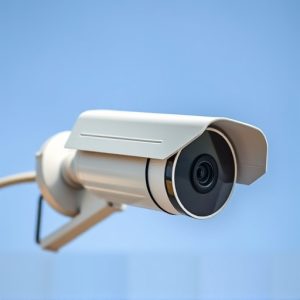Mounting Dummy Cameras Under Eaves: Security, Legalities, & Future Trends
Homeowners and businesses increasingly opt for dummy camera setups as a cost-effective way to enhanc…….
Homeowners and businesses increasingly opt for dummy camera setups as a cost-effective way to enhance security, leveraging advanced technology at affordable prices. By strategically mounting these cameras under eaves or around properties, individuals deter intruders without significant investment in surveillance systems. This trend involves a four-step process: planning placement, selecting realistic cameras, preparing mounting surfaces, and managing cables for an authentic appearance. However, it raises legal and ethical concerns regarding privacy laws and individuals' right to privacy, requiring careful consideration and consultation with legal experts. Future trends predict an integral role for AI and Machine Learning in smart security systems, enhancing security through pattern recognition and environment adaptation.
In today’s digital age, home security is a top concern. While real security cameras offer peace of mind, their visible presence can also deter potential intruders. This is where dummy camera setups, or fake security monitoring devices, come into play. In this article, we explore the motivation behind these decoys, providing a step-by-step guide to mounting dummy cameras under eaves for maximum effectiveness. We’ll also delve into legal and ethical considerations and discuss alternative solutions, including future trends in home security visualization.
- Understanding the Motivation Behind Dummy Camera Setup
- Mounting Dummy Cameras: A Step-by-Step Guide
- Legal and Ethical Considerations
- Alternative Solutions and Future Trends in Home Security Visualization
Understanding the Motivation Behind Dummy Camera Setup
Many homeowners and business owners opt for dummy camera setups as a cost-effective way to enhance security without the need for extensive surveillance systems. Understanding the motivation behind this practice reveals a growing trend in DIY security measures, especially with the accessibility of advanced technology at affordable prices. By mounting dummy cameras under eaves or in strategic locations around properties, individuals can deter potential intruders without breaking the bank.
This tactic is particularly appealing due to its simplicity and effectiveness in creating the illusion of enhanced security. Dummy cameras serve as a powerful psychological tool, encouraging would-be thieves to reconsider their actions, as they may believe that real surveillance is in place. As a result, it becomes an accessible solution for those seeking to safeguard their spaces without major investments in security infrastructure.
Mounting Dummy Cameras: A Step-by-Step Guide
Setting up dummy cameras for a fake security system can effectively deter potential intruders, providing the illusion of a well-protected space. Mounting these cameras under eaves is a strategic choice as it adds realism to your setup while keeping them out of plain sight. Here’s a step-by-step guide:
1. Measure and Plan: Start by measuring the distance from the edge of the eave to where you want the camera to be positioned. Ensure there’s enough clearance for the camera’s lens and any necessary cables. Plan the placement of each dummy camera, considering angles that mimic real surveillance coverage.
2. Select Suitable Dummy Cameras: Choose high-quality dummy cameras designed to look realistic. They should feature detailed features like lenses, cables, and even power adapters, making them indistinguishable from genuine security cameras in appearance.
3. Prepare the Eaves: Clean the area under the eaves to ensure a secure mounting surface. Use appropriate tools and hardware to fix the cameras firmly in place, imitating their installation in a real security system. Ensure the cameras are level and aligned correctly for optimal visual effect.
4. Cable Management: Carefully manage any visible cables by routing them neatly along the eave or using cable ties to keep them out of sight. This step is crucial for maintaining realism and preventing the setup from appearing hastily constructed.
Legal and Ethical Considerations
Setting up a fake security monitoring device, such as mounting dummy cameras under eaves, raises important legal and ethical questions. While it may seem like an effective deterrent for potential criminals, it’s crucial to consider privacy laws and regulations in your region. Installing surveillance equipment without proper authorization can result in severe penalties, including fines and legal action. Additionally, the use of mock security devices could lead to false alarms, causing distress for neighbors and local authorities.
Ethically, the placement of dummy cameras must respect individuals’ right to privacy. This practice should be approached with caution, especially in residential areas where homeowners have a reasonable expectation of privacy. It’s essential to balance the desire for enhanced security with the potential impact on nearby properties and the broader community. Always consult legal experts before proceeding to ensure compliance with all applicable laws and to avoid unintended consequences.
Alternative Solutions and Future Trends in Home Security Visualization
In recent years, the home security industry has witnessed a shift from traditional physical barriers to more advanced and integrated smart systems. While robust and reliable, conventional security setups often rely on conspicuous cameras and alarm systems that can be easily bypassed by determined intruders. As such, there’s a growing trend towards alternative solutions that offer better discretion and realism. One notable example is the mounting of dummy cameras under eaves, blending seamlessly with architectural features to deter potential threats without drawing unnecessary attention.
Looking ahead, future trends in home security visualization point towards even more sophisticated and adaptive technologies. Artificial intelligence (AI) and machine learning are expected to play a pivotal role, enabling devices to recognize familiar patterns, distinguish between genuine threats and false alarms, and learn from evolving environments. This could lead to smarter, more responsive systems that adapt to individual routines, further enhancing residential security while minimizing unnecessary alerts.
In conclusion, while mounting dummy cameras under eaves may offer a cost-effective solution for basic security visualization, it’s crucial to balance this approach with legal and ethical considerations. As technology evolves, alternative solutions like advanced AI-driven home security systems are transforming the landscape of residential protection. By staying informed about these trends, homeowners can make informed decisions that adapt to both their security needs and privacy rights in today’s digital era.


